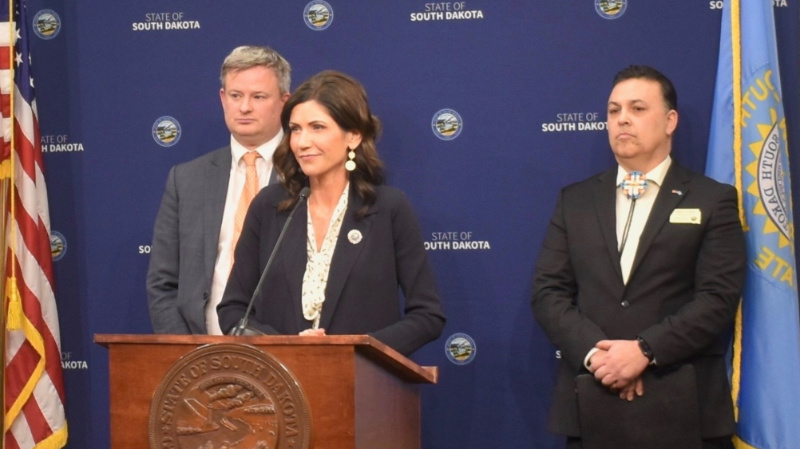Although South Dakota Gov. Kristi Noem never closed down the state, taking an approach that including recommendations and public health notices, the Mount Rushmore State has fared better in COVID-19 statistics than places such as Texas, where Gov. Greg Abbott is still gradually lifting restrictions.
Some approaches favored by Noem have included issuing public health notices if there is a potential exposure risk at a business, enabling residents to self-monitor for symptoms, according to the state’s COVID-19 information hub. Masks were never mandated by the state, and as of late September, only 8% of the state's hospital beds were occupied by coronavirus patients, according to the Daily Wire.
And although South Dakota is ranked in the bottom third of states for death rates with 268 coronavirus deaths per million people, Texas is in the top third with 564 deaths per million, according to worldometers.info.
In fact, the South Dakota COVID-19 dashboard shows that positive cases only recently began to rise in September, matching trends in neighboring states with similar climates and weather.
The Texas dashboard does not look substantially different from South Dakota’s in terms of cases, although the Texas spike in cases came much sooner, while restrictions were still tighter across the state in late July and early August.
Recent decisions by Abbott have permitted establishments to go from 50% capacity to 75% capacity, according to coverage by The Texas Tribune. Yet those business sectors – which include restaurants, retail stores and office buildings – never faced such strict measures in South Dakota, where Noem’s strategy focused on providing the public with resources and information.
And even with South Dakota still caught in the international economic crisis created by COVID-19 restrictions, the state's unemployment rate never surged as high as Texas’ and is still doing better in comparison.
South Dakota had 3.8% unemployment in March and peaked at 10.9% unemployment in April, but dropped to 4.8% unemployment by August, according to the U.S. Bureau of Labor Statistics.
In comparison, Texas went from 5.1% unemployment in March, peaked at 13.5% unemployment in April, and settled at 6.8% unemployment in August, according to the U.S. Bureau of Labor Statistics.
Current unemployment, however, may not be as meaningful as how well Texas is prepared to succeed economically in the future.
The Texas Recovery Alliance recently cautioned that failing to speed reopening – especially of critical business sectors on the verge of collapse – could leave the state’s economy irreparably damaged, according to coverage by Texas Business Daily.
Although some have attacked Noem’s approach, saying her administration treated COVID-19 as a non-threat, the administration has encouraged similar measures ordered in other states through the governor's Back to Normal Plan, such as social distancing and mask wear. The key difference has been between recommendations and education, and issuing orders.
A quote from Noem on the front page of the Back to Normal Plan reads, “Thanks to a strong commitment and respect for the principle of personal responsibility, South Dakotans have dramatically changed the trajectory of our initial COVID-19 projections.”









